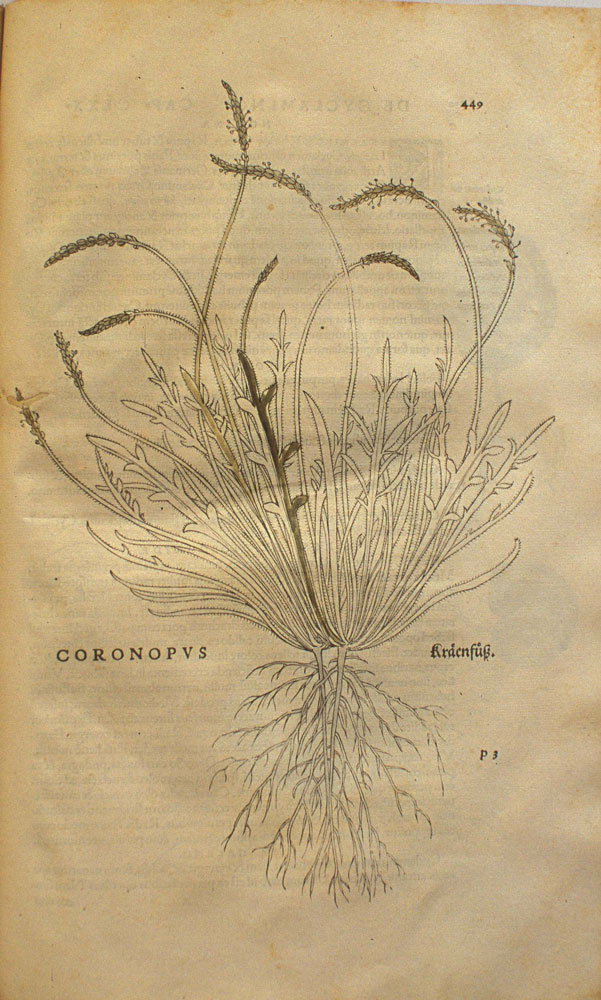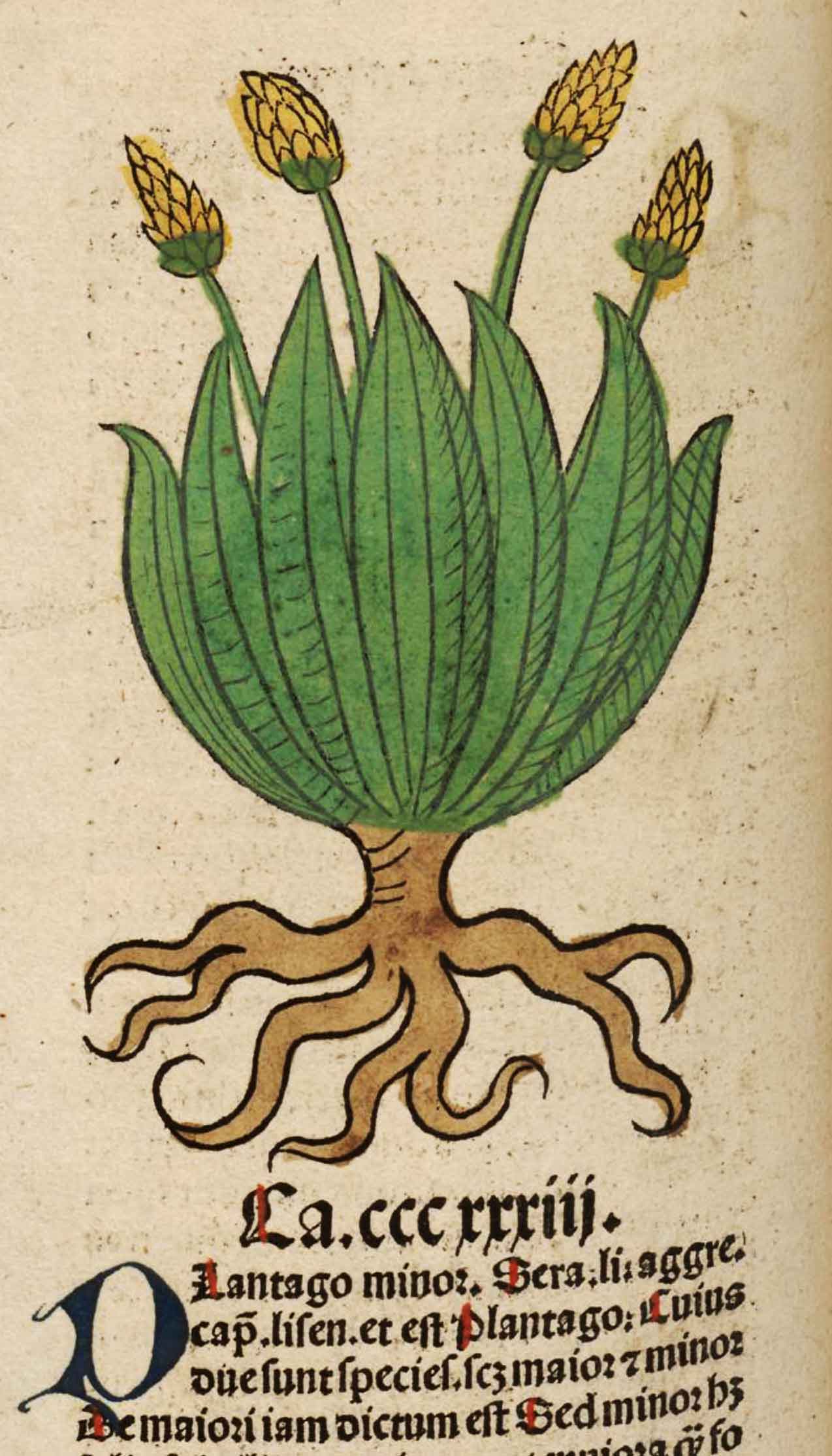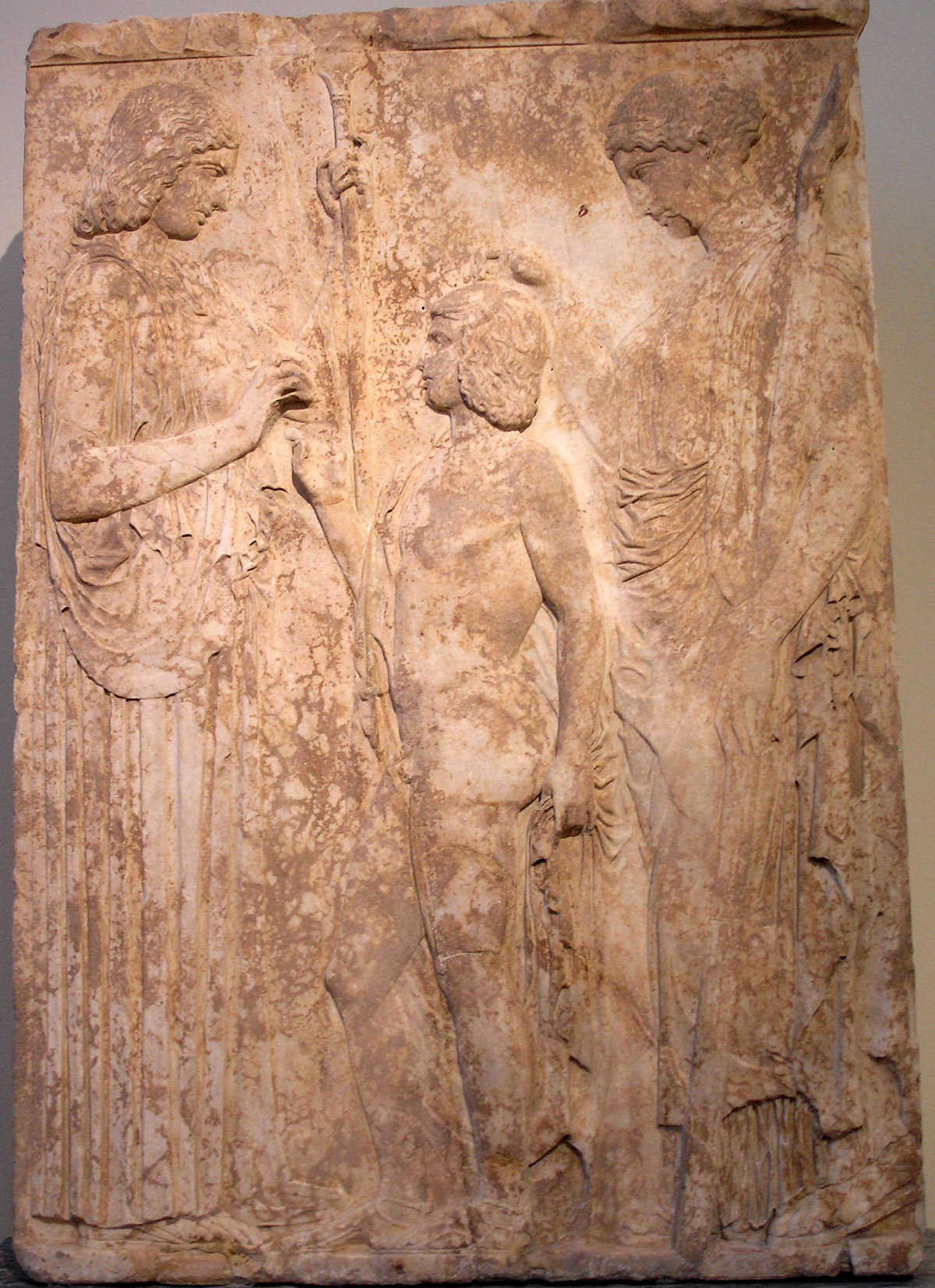Original French: Holosteon. c’eſt tout de os: au contraire. car herbe n’eſt en nature plus fragile & plus tendre, qu’il eſt.
Modern French: Holosteon. c’est tout de os: au contraire. car herbe n’est en nature plus fragile & plus tendre, qu’il est.
Notes
Coronopus

Coronopus Kraenfuss
Taxon: Plantago coronopous L.
English: buck’s-horn plantain
Fuchs, Leonhart (1501 – 1566),
De historia stirpium commentarii insignes…. Basil: In Officina Isingriniana, 1542.
Smithsonian Library
Plantago

Holosteon
Pliny xxvii. 10, §65.
Rabelais, François (ca. 1483–1553),
The Five Books and Minor Writings. Volume 1: Books I-III. William Francis Smith (1842–1919), translator. London: Alexader P. Watt, 1893.
Internet Archive
Holosteon
C’est en effet ce que signifie en grec ὀλόστ[??].
Rabelais, François (ca. 1483–1553),
Œuvres de Rabelais (Edition Variorum). Tome Cinquième. Charles Esmangart (1736–1793), editor. Paris: Chez Dalibon, 1823. p. 268.
Google Books
holosteon
Holosteon sine duritia est herba ex adverso appellata a Graecis, sicut fel dulce, radice tenui usque in capillamenti speciem, longitudine quattuor digitorum, ceu gramen foliis angustis, adstringens gustu. nascitur in collibus terrenis. usus eius ad vulsa, rupta in vino potae. et volnera quoque conglutinat, nam et carnes, dum coquuntur, addita.
Holosteon (all-bone) is a plant with nothing hard about it, the name being an antiphrasis coined by the Greeks, just as they call gall sweet. Its root is so slender as to look like hair. Four fingers long, the plant has narrow leaves like grass and an astringent taste, growing on hills with deep soil. Taken in wine for sprains and ruptures it also closes wounds, for it even fastens together pieces of meat when boiled with them.
Pliny the Elder (23–79 AD),
The Natural History. Volume 7: Books 24–27. William Henry Samuel Jones (1876–1963), translator. Cambridge, Massachusetts: Harvard University Press, 1956. 27.065.
Loeb Classical Library
holosteon
De ὂλοζ, tout, ὀστέον os, en tout dur comme l’os, nom donné par antiphrase à une plante très molle. « Holosteon sive duritia est herba ex adverso appellata a Græcis, sicut fel dulce ». L’όλὁστιον de Dioscoride (III, 11), Holosteon de Pline, XXVII, 65, holostium de Galien (De. simpl. med. fac., l. VIII) est, pour quelques auteurs, Plantago coronopus L.; pour Fée, plus probablement Plantago holostea, Lmk. de l’Europe méridionale. Mais la plante que les botanistes du XVIe siècle, Boutonet, Pena, Lobel, appelaient Holosteum monspelliense, est Plantago albicans L., de la France et de l’Europe méridionales. Sainéan (H.N.R., p; 117) croit reconnaître dans l’Holosteon de Rabelais une Caryophyllée, Holosteum umbellatum, L. (Paul Delaunay)
Rabelais, François (ca. 1483–1553),
Oeuvres. Édition critique. Tome Cinquieme: Tiers Livre. Abel Lefranc (1863-1952), editor. Paris: Librairie Ancienne Honoré Champion, 1931. p. 350.
Internet Archive
holosteion
Thus again, [gk] or holosteion, meaning bone thoughout, is used paradoxically to identify a very soft plant.
Rabelais, François (ca. 1483–1553), Complete works of Rabelais. Jacques LeClercq (1891–1971), translator. New York: Modern Library, 1936.
holosteon
D’après De latinis nominibus.
Rabelais, François (ca. 1483–1553), Le Tiers Livre. Edition critique. Michael Andrew Screech (1926-2018), editor. Paris-Genève: Librarie Droz, 1964.


